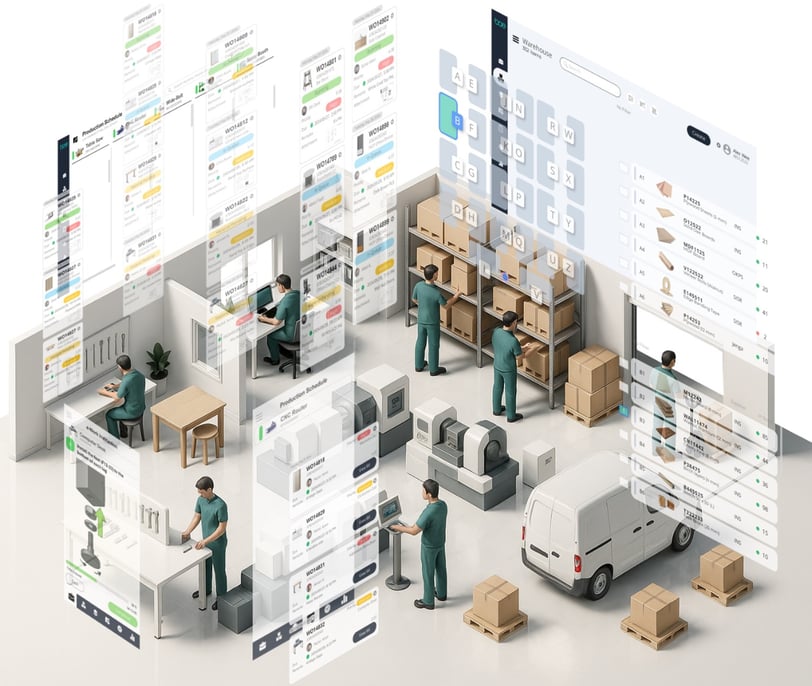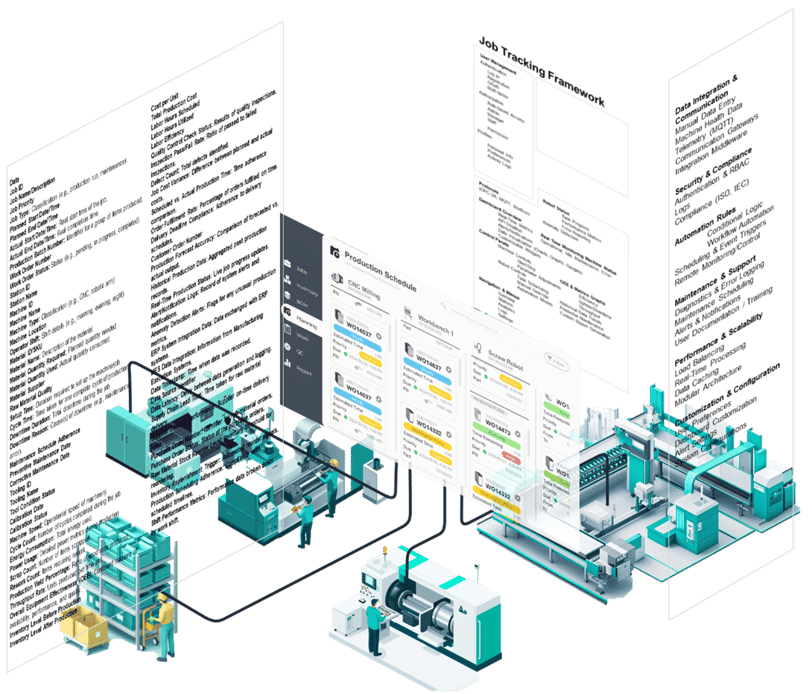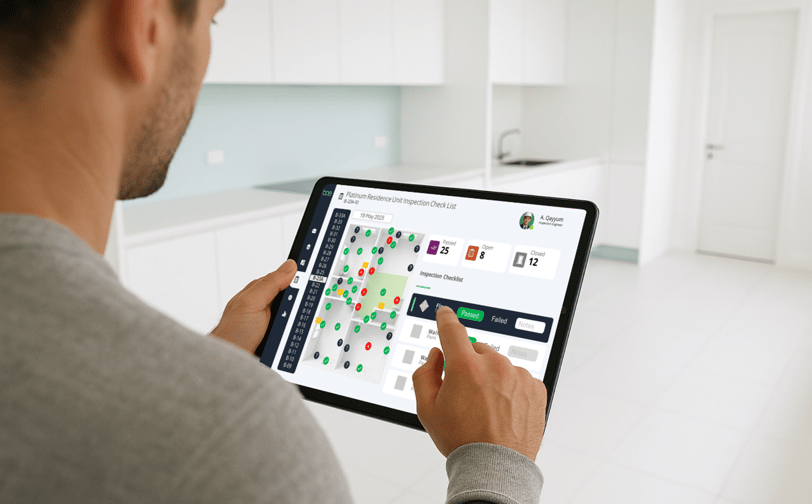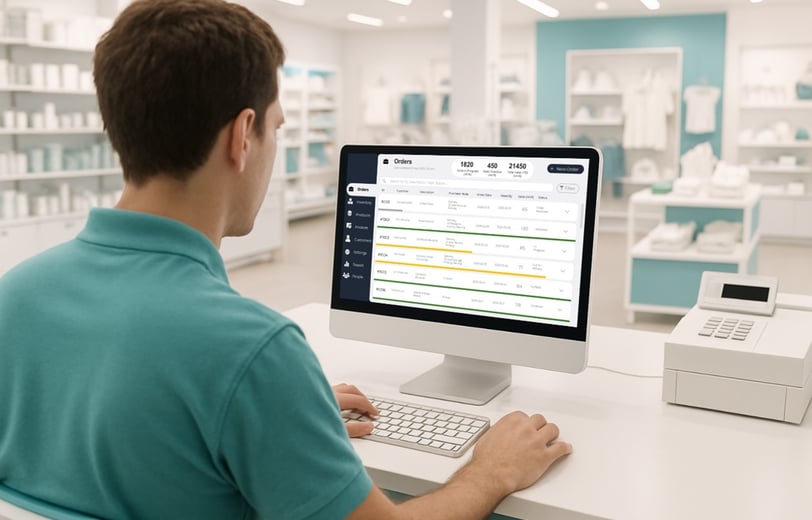Transforming Business Operations Through Custom Cloud Applications: A Path to Efficiency, Agility, and Digital Innovation
In today’s fast-moving business environment, off-the-shelf tools often can’t keep up with unique operational needs. This article explores how BOE’s custom cloud applications help businesses streamline processes, boost agility, and drive real digital transformation—with real-world examples and practical impact.
BOE PLT
8/10/202315 min read


In today’s competitive landscape, businesses across industries face pressure to streamline operations and embrace digital transformation. Manual workflows, siloed data, and legacy systems can slow down productivity and hinder decision-making. To stay agile, organizations need practical, scalable solutions that automate routine tasks, unify data, and empower teams to work smarter. Microsoft’s Power Platform offers such a solution – a suite of low-code tools that enables companies to rapidly build custom apps, automate workflows, analyze data, create websites, and develop chatbots without heavy coding. This whitepaper explores how Microsoft Power Platform (comprising Power Apps, Power Automate, Power BI, Power Pages, and Power Virtual Agents) helps businesses modernize operations, improve decision-making, and drive measurable efficiency gains. We will introduce each component in clear terms, share real-world examples from manufacturing to retail to services, highlight key business outcomes (like time savings and error reduction), and outline how our company partners with clients implement these solutions. The goal is to demonstrate, in an accessible yet professional tone, how Power Platform can catalyze digital transformation for business owners and operations managers seeking practical improvements.


Microsoft Power Platform: Overview and Components
Microsoft Power Platform is an integrated cloud platform for building end-to-end business solutions that connect your data, processes, and people. It is designed to remove complexities by providing employees with easy-to-use tools to create apps, workflows, reports, websites, and even chatbots through intuitive graphical interfaces. This means that both tech-savvy developers and everyday business users can collaborate to solve problems and innovate faster. All components are unified by a secure underlying data backbone (Microsoft Dataverse) to ensure a connected, seamless experience. The Power Platform consists of five primary components, each specializing in a different area:
Power Apps (Custom Application Development): Power Apps allows us to build custom business applications with a drag-and-drop visual interface and minimal code. Users can create tailored mobile or web apps to digitize forms, capture data, or streamline specific processes without writing traditional software code. These apps can run on browsers or mobile devices, integrate with other systems via connectors, and have pixel-perfect designs if needed. For example, a company can quickly develop a canvas app for field inspectors to record equipment data on a tablet, or a model-driven app that sits atop a centralized data model for managing customer relationships. Power Apps bridges the gap between off-the-shelf software and custom development by enabling agile creation of solutions unique to your business. It is mobile-friendly by default and tightly integrates with other Microsoft tools like SharePoint, Teams, and Dynamics 365, making it easier to embed apps in the platforms your employees already use.
Power Automate (Workflow Automation): Power Automate is a tool for automating repetitive tasks and orchestrating workflows across your applications and services. It can connect to over 1000 services (both Microsoft and third-party) to trigger actions, route data, and eliminate manual steps. With Power Automate, you can set up anything from a simple approval workflow (e.g. automatically route a purchase order for manager approval via email/Teams) to complex process automations (e.g. synchronizing data between an ERP system and a SharePoint list, or using robotic process automation to input data into a legacy system). The interface is low-code: users can start from templates or use a visual designer to specify triggers and actions. By boosting productivity through automation, Power Automate frees your team from tedious copy-paste chores and ensures processes are executed faster and more consistently. For instance, one of our clients, a major retailer automated inventory alerts and supplier restocks with Power Automate, avoiding delays and stockouts. The introduction of AI capabilities (such as Power Platform’s Copilot) further accelerates building flows.
Power BI (Business Analytics): Power BI is a business intelligence and data visualization tool that turns our unrelated data sources into coherent, visually immersive, and interactive dashboards. It enables organizations to connect to data (from Excel files to cloud databases to live operational systems), model and transform that data, and create reports that uncover insights at a glance. Power BI dashboards can display real-time metrics – for example, sales by region, manufacturing yield, or inventory levels – with the ability to drill down for details. This empowers employees and decision-makers to monitor key performance indicators and spot trends or anomalies quickly. Power BI’s strength lies in making data analysis effortless: users can create charts and graphs via drag-and-drop, and even ask questions in natural language to generate visuals. BOE helped a manufacturing client consolidate all their production data into a single Power BI dashboard for plant managers, enabling real-time visibility into output and downtime.
Power Pages (Website/Portal Development): Power Pages (formerly Power Apps Portals) is a low-code tool for building secure, data-driven websites – whether for your employees, customers, or partners. With Power Pages, businesses can create external-facing portals or internal web pages that allow users to interact with data (for example, submitting requests, viewing account information, or collaborating) in a browser. It provides templates and a design studio so that even non-developers can lay out pages, add forms or lists linked to your data, and publish a site quickly. Crucially, Power Pages integrates with the same Dataverse and security model, so we can expose only the appropriate data to portal users and have them sign in if needed. This is ideal for scenarios like customer self-service portals, vendor or distributor portals, community forums, or internal intranets without starting a web project from scratch. For instance, a company might deliver an internal portal for employees to submit IT tickets or access HR policies, or a partner portal for distributors to track purchase orders and deliveries. As an example, we helped our client—a battery recycling company—use Power Pages together with Power Automate and Power BI to create an external portal where their retail partners can enroll and access training materials. This extended their Dynamics 365 data to a self-service web interface for partners. Power Pages enabled them to rapidly deploy web solutions that would otherwise require significant web development effort, all while leveraging the same low-code approach and centralized data as the rest of the Power Platform.
Power Virtual Agents (Intelligent Chatbots): Power Virtual Agents (PVA) enables businesses to build AI-powered chatbots and virtual agents through a guided, code-free interface. With PVA, you can design chatbots that handle common queries or tasks – for customers or employees – available 24/7 via a chat interface on your website, Teams, or other channels. The chatbot designer lets you define conversation topics, trigger phrases, and bot responses with a simple GUI, and you can integrate the bot with backend services via Power Automate for more complex actions (such as retrieving an order status or opening a support ticket). We helped our clients build chatbots to automate the handling of common service inquiries and internal FAQs, freeing up staff and speeding up information delivery. In short, Power Virtual Agents brings conversational AI capabilities within reach of business teams, allowing organizations to automate customer service or support workflows in an approachable and scalable way.
Microsoft Fabric: It is an end-to-end analytics platform designed to simplify and unify data management, analytics, and AI workloads. By combining technologies such as Azure Data Factory, Synapse Analytics, and Power BI into a single, cohesive environment, Microsoft Fabric allows organizations to seamlessly ingest, process, analyze, and visualize data. It provides robust tools for data engineers, data scientists, analysts, and business users to collaborate effortlessly, eliminating data silos and streamlining workflows. With built-in capabilities for governance, security, and scalability, Microsoft Fabric empowers enterprises to leverage their data effectively, driving faster insights and smarter business decisions.


How the Microsoft Tools works together: One of the greatest Azure cloud strengths is that these components can be used individually or in concert as a unified ecosystem. They share a common data environment (Dataverse) and over a thousand connectors to other systems, which means an app built with Power Apps can easily feed data into a Power BI dashboard, or a Power Automate flow can trigger a notification that surfaces inside a Power Apps interface. The platform also integrates with Microsoft 365 (Teams, SharePoint, Excel, etc.), Azure services, and Dynamics 365, so it works with your existing IT investments rather than requiring a rip-and-replace.
Streamlining Operations: Real-World Applications Across Industries
The true power of Microsoft’s Power Platform is demonstrated in its real-world applications. Across manufacturing plants, retail chains, logistics operations, and service organizations, these tools are solving practical problems – automating tedious workflows, digitizing paper-based processes, and unlocking data-driven decision-making. Below, we explore examples from multiple industries, showing how businesses have used Power Apps, Power Automate, Power BI, Power Pages, and Power Virtual Agents to overcome operational challenges. Each scenario highlights the problem addressed, the Power Platform solution implemented, and the tangible benefits (such as time saved, errors reduced, or increased agility) that resulted.
Manufacturing & Industrial Operations
Manufacturing companies often deal with complex processes – from production planning on the shop floor, to inventory management, to quality control – traditionally managed through paper forms or legacy systems. Such manual methods can lead to delays, errors, and lack of visibility into operations. Microsoft Power Platform provides a way to modernize these operations by quickly building custom solutions that connect machines, data, and people on the factory floor. We have helped many manufacturers develop Power Apps to replace clipboards and spreadsheets with real-time data capture, Power Automate to streamline approvals and data flows, and Power BI to monitor production metrics in real time. The result is greater efficiency, improved accuracy, and greater agility in responding to issues. Below are several real-world use cases from the manufacturing and industrial sectors:
Digital Inventory Tracking and Lot Management: Many manufacturers still used Excel or paper to track inventory lots and work orders, which was time-consuming and error-prone. By creating a custom Power Apps solution, an FMCG (fast-moving consumer goods) company automated its food processing lifecycle and lot tracking. The Power App allowed shop floor workers to scan and record items through a mobile device, automatically updating inventory records. Prior to our solutions, dozens of vendor invoices and lot records were reconciled by hand each day. After using our apps, the receiving and validation process became far less labor-intensive – the reconciliation was faster and virtually paperless, and manual data entry and rework dropped significantly. This not only saved time for the purchase department but also reduced data errors in inventory counts. The inventory app gave real-time visibility into stock levels, enabling better planning and fewer production stoppages due to missing ingredients.
Automated Invoice Processing and Approvals: Processing supplier invoices is another area ripe for automation. A local agriculture company needed to speed up its invoice approvals and minimize human error in data entry. We helped the client develop an OCR-powered invoice processing workflow using Power Automate and AI Builder, which offers pre-built AI models like OCR. Incoming invoices (PDFs or email attachments) are automatically read, with key data—such as vendor details, amounts, and line items—extracted within minutes. A Power Automate flow then logs the data and routes the invoice for approval in SharePoint. This solution enabled error-free data extraction in minutes, significantly reducing document processing time. By eliminating manual typing and verification, it also reduced human errors and allowed employees to focus on exceptions and higher-value tasks. Multiple users could collaborate on the platform without bottlenecks, and the company found it highly cost-effective compared to manual processes or more expensive OCR solutions. Faster invoice approvals also improved supplier relationships and enabled the business to take advantage of early payment discounts—directly benefiting the bottom line.
Real-Time Production Dashboards for Decision Support: On the operations side, manufacturing managers often lacked timely insights because data was locked in various machines or systems. BOE specializes in developing intuitive Power BI dashboards that deliver real-time, easy-to-understand production data to decision-makers on the factory floor. For example, a hardware manufacturer was struggling with outdated, slow-loading reports that frustrated stakeholders due to stale data and poor performance. By revamping their reporting approach with Power BI, we helped them consolidate data into a single source and designed interactive dashboards segmented by function—sales, orders, accounting, inventory, and more. This gave plant managers and executives instant visibility into live production KPIs and quality metrics, all on one screen. The improved visibility enabled quicker adjustments to production schedules and more informed strategic decisions. After optimizing complex SQL models and migrating to Power BI, the company also saw a significant improvement in report load times and overall stakeholder satisfaction. With better data visualization, manufacturing leaders were able to identify bottlenecks and causes of downtime faster, enabling proactive actions to improve throughput.


Quality Control and Compliance Tracking: Ensuring product quality and regulatory compliance is critical in industries like automotive, aerospace, or food processing. BOE developed a suit of Power Platform solutions which are used to make quality checks more systematic and traceable. For instance, instead of logging quality inspection results on paper—which are often difficult to aggregate for analysis — we developed a quality control app that allows technicians to record inspection data on tablets at each checkpoint. These records feed into a Power BI dashboard that monitors compliance with quality standards in real time. If an issue arises—such as a measurement falling out of tolerance—Power Automate immediately sends an alert to supervisors for corrective action. This solution was adopted by a manufacturer to ensure that every product met specifications before leaving each station and to enable quick tracing and response to any deviations. The digital record-keeping not only reduced paperwork but also created a complete audit trail useful for regulatory inspections. By catching issues early and preventing defective products from moving forward, the company reduced rework and scrap rates—resulting in direct cost savings.
These examples illustrate how BOE has helped manufacturing and industrial operations become more efficient, accurate, and responsive by leveraging the Power Platform. Whether it’s a maintenance team building a checklist app for equipment inspections or a production planner using an AI bot to forecast delays, the common theme is empowering the people closest to the process to solve problems quickly.
The result is streamlined operations—less time wasted on manual tasks, fewer errors, and better data to drive continuous improvement.


Retail & Consumer Goods
Retail businesses are using Power Platform to modernize store operations and improve agility. Key scenarios include inventory & stock management, employee scheduling, in-store digital tools, customer personalization apps, and analytics dashboards (as illustrated above). These low-code solutions help retailers respond faster to demand changes and enhance the customer experience.
The retail industry runs on thin margins and fast pace – making efficiency and customer satisfaction paramount. Retailers must manage inventories across stores and warehouses, schedule staff optimally, engage customers with personalized experiences, and glean insights from sales data, all while keeping costs down. Microsoft Power Platform provides a toolkit to address these needs without overhauling existing systems. Because it integrates with point-of-sale (POS), ERP, CRM, and other systems, Power Platform acts as a flexible layer that retailers can use to fill gaps and quickly roll out improvements in operations. Here we look at several field-proven retail use cases:
Inventory and Stock Management Automation: Managing inventory accurately is critical for retail success, yet manual stock counts and disconnected systems often cause delays and stockouts. Our team empowers retailers with real-time inventory tracking solutions using Power Apps and Power Automate, enabling simple, mobile-first applications integrated with barcode scanning and automated workflows. For example, we helped a major retail chain digitize shelf audits—scanning product barcodes via mobile devices and syncing data to a central database, with restock alerts triggered automatically when thresholds are breached. A notable success is a bakery chain that transitioned from paper-based processes to a fully digital platform for stock intake, returns, and delivery reconciliation. The result: improved data accuracy, real-time visibility across all outlets, and reduced lost sales through faster restocking of high-demand items. This demonstrates how low-code digital tools can drive major improvements in retail operations, ensuring the right products are always in the right place at the right time.
Employee Scheduling and Task Management: Coordinating employee schedules and daily tasks across multiple retail locations is often time-consuming and error-prone when managed through spreadsheets and phone calls. Our team addresses this with custom scheduling and task management apps built using Power Apps and Power Automate, designed to simplify shift planning and store operations. These solutions factor in staff availability, roles, and peak hours to generate optimal schedules. Store leads can easily adjust shifts, while employees can swap or request changes via the app. Integrated notifications through Microsoft Teams or email ensure all updates reach staff instantly. Beyond scheduling, daily task checklists—such as store opening routines, cleaning, or restocking—are digitized into mobile apps, giving managers real-time visibility into task completion. These lightweight, easy-to-deploy solutions reduce miscommunication, boost staff coordination, and allow managers to focus more on customer experience than administrative follow-ups.
In-Store Digital Tools for Frontline Staff: In today’s fast-paced retail landscape, equipping frontline staff with real-time digital tools is essential to delivering seamless customer experiences. Using Power Apps, we help retailers build in-store helper apps that provide instant access to product catalogs, stock availability (including nearby stores), store maps, and customer order histories. For example, a sales associate can use a tablet to check warehouse stock for a specific shoe size or place an online order for a customer—all without leaving the sales floor. One global furniture retailer deployed a Power App that lets showroom staff scan product tags and instantly view stock and location info, reducing delays and improving service quality. These tools put critical store data in the hands of every associate, reducing dependency on supervisors and improving customer satisfaction and conversion rates.
Analytics and Sales Performance Dashboards: On the analytics front, Power BI dashboards are transforming how retail decisions are made. We’ve worked with brands to consolidate fragmented reports into unified dashboards that visualize sales, inventory turnover, customer feedback, and more—all in near real time. By connecting to POS systems, e-commerce platforms, and even Azure Machine Learning, these dashboards enable smarter forecasting and faster response to operational changes. One retailer reported a 20% reduction in reporting time and a 4× faster decision-making cycle after switching to Power BI. From identifying sales dips to optimizing promotions, these tools turn raw data into immediate business action.
From inventory tracking to performance analytics, BOE solutions enable a flexible, low-code approach to digital transformation in retail. It empowers not just central IT teams, but also store managers and analysts to build tailored tools that boost efficiency and responsiveness—without disrupting existing systems. This agile, incremental modernization helps retailers stay competitive while staying aligned with day-to-day realities on the shop floor.
Services and Customer Experience
Organizations in service industries – from professional services and consultancies to field service operations, to government agencies and nonprofits – have also harnessed our solutions to improve their operations and deliver better service experiences. The common thread in “services” is people and processes: coordinating staff activities, managing client interactions, handling information flows, and responding to service requests. Our full-stack capabilities allow these organizations to tailor solutions to their unique service workflows, often integrating with existing CRM or ERP systems. Moreover, customer-facing services benefit from chatbots and portals that can extend service delivery beyond office hours. Let’s explore a few examples across various service-oriented contexts:
Automating Customer Service with Virtual Agents: Providing fast, consistent customer support is critical in industries like insurance, banking, and telecommunications—yet support teams are often overwhelmed by repetitive queries. To address this, our team builds AI-powered chatbots using Copilot Studio, enabling businesses to automate routine service tasks with no-code, scalable solutions. For a major insurance provider, we developed a virtual agent integrated with their client database via Power Automate. The bot could instantly answer questions like claim eligibility based on specific client conditions, providing accurate, personalized responses to internal agents. This reduced call center load and eliminated delays from manual lookups. We use the same approach for banks and telecom providers, where we deployed customer-facing bots to guide users through common troubleshooting steps or inquiries. These bots escalate to human agents only when needed, improving first-contact resolution rates by over 30%. Most importantly, the bots were created and maintained by support content experts—no data science team required—thanks to the intuitive, no-code development environment.
These virtual agents empower organizations to scale support, improve response times, and deliver cost-effective self-service without compromising service quality.
Internal Process Automation in Professional Services: Professional services firms—such as IT consultants, marketing agencies, and law firms—often manage documentation-heavy internal processes, from report generation to data extraction across multiple sources. We support these organizations by automating such tasks to enhance efficiency and reduce manual workload. For example, at IDT Law, we implemented a solution using Power Automate and AI Builder’s text recognition to extract key performance data from PDF reports. Previously, consultants spent hours manually compiling information for client updates. Now, the automation flow scans PDFs, extracts the necessary figures, and feeds them directly into a Power BI dashboard or preformatted Excel template. This not only saved hundreds of hours annually but also eliminated copy-paste errors, enabling consultants to focus on insightful analysis instead of data collection.
Field Service Optimization: For service industries involving field work—such as utilities, maintenance, and healthcare—timely coordination and real-time visibility are essential. We help companies streamline these operations by building mobile-first Power Apps that equip field staff with tools to log job details, capture photos, and report issues on-site. For example, at a utilities company, we developed an app that connects directly to their scheduling system— allowing technicians to update job status in real time and enabling dispatchers to assign the next task immediately. Similarly, for an HVAC servicing company, we created a Power Platform solution to track the full lifecycle of their equipment—from manufacturing and delivery to installation and maintenance—a process they called “cradle to crate” tracking. All data is centralized in Dataverse, accessible through apps and dashboards, enabling proactive maintenance scheduling and better-informed service responses. The result: technicians spend less time on paperwork, managers gain full operational oversight, and customers benefit from faster, more reliable service.
Delivering Tangible Business Impact Through Low-Code Innovation
Across the industries we support, our Power Platform solutions consistently generate measurable outcomes — reducing process time, improving data accuracy, enabling real-time insights, and increasing operational agility. These outcomes are not theoretical; they are the direct result of how we design and implement solutions that align with each client’s workflows and goals.
Time & Cost Savings: By automating repetitive tasks and digitizing manual processes, we help clients significantly shorten process cycle times — often reducing what took hours to just minutes. The resulting capacity gains enable teams to focus on higher-value work without increasing headcount.
Higher Accuracy, Fewer Errors: Our apps standardize data input and validation, reducing costly mistakes and rework. Embedded business logic and AI tools like OCR ensure accuracy from the point of entry, increasing trust in operational data.
Smarter, Faster Decisions: We build real-time dashboards using Power BI that empower managers to make informed decisions without waiting for reports. From sales trends to inventory performance, leaders get a unified view across departments.
Operational Efficiency: Whether streamlining approvals, reducing system handoffs, or consolidating workflows, our solutions drive leaner, more responsive operations. We often see double-digit improvements in productivity and significant reductions in turnaround time.
Greater Agility, Lower IT Burden: Our approach allows rapid development and iteration without heavy IT resources. We empower business users to co-own their tools, speeding up delivery while reducing reliance on external systems or costly rework.
By focusing on outcomes—not just features—we ensure every solution delivers real value: faster service, better decisions, improved accuracy, and empowered teams. These results form the foundation of the ROI our clients consistently achieved through our implementation of Microsoft Power Platform.
